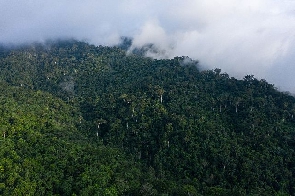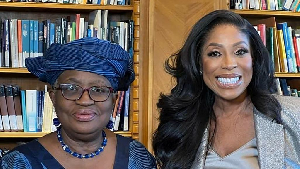Godfried Addo Ayisi, Head of Technical Services at Rocksure International Limited, a mining company, has said the country’s bauxite resource can be mined without destroying the forest reserves.
He said this could be achieved if the best mining practices and environmental protection strategies, including reclamation and revegetation were adopted.
He said Ghana had over two billion metric tonnes of untapped bauxite resources at Nyinahin-Mpasaaso, Kibi and Ejuanema, except for those deposited at Awaso.
He said mining those untapped bauxite ore required best practices and methods like surface mining, that would protect the fauna and the flora of the forest reserves housing the mineral resource.
Mr Ayisi said this when he gave a lecture on the topic: “Overview of Ghana’s Integrated Aluminium Industry (IAI),” at the 11th Annual Lecture of the Alumni Association of University of Mines and Technology (ALUMat).
The lecture, held at the UMaT School of Railway and Infrastructure Development, at Essikado in the Sekondi-Takoradi Metropolis, was sponsored by Anglogold Ashanti Iduapriem Mine, Quantum LC Company Limited, Rocksure International Limited, and Impa Marine and Offshore Logistics Limited.
Mr Ayisi noted that the country stood a chance to benefit fully from mining bauxite if appropriate strategies were put in place to manage and add value to the raw natural resource.
According to him, since the exploration and mining works in the 1940’s, Ghana had been exporting bauxite ore and benefited from only the mining aspect, whilst countries like Ukraine, China and Brazil benefited from the upstream aspects like the refinery into alumina and smelting the alumina into aluminum.
He indicated that from May to March 2022, the price of bauxite in Ghana was $29 per metric ton.
“This represented a decrease of $3 compared to the prices between February 2018 and April 2020, except for July and October 2018 each which recorded prices of $31.97 per metric ton”, he added.
Mr Ayisi said the world market price of the bauxite ore, alumina and the aluminum showed that the prices increase about tenfold from bauxite ore to alumina and about eight-fold from alumina to aluminium, saying, “Indeed, from bauxite ore to aluminium the prices increase about 70 times”.
He said despite the government’s efforts in improving the IAI through the establishment of the Ghana Integrated Aluminium Development Corporation (GIADEC) in 2018 and other initiatives, a lot more still needed to be done to ensure a globally competitive aluminium industry in the entire value chain.
“Through a series of engagements with the Government of Ghana stakeholder organisations, GIADEC has developed a Strategic Outline Master plan for Ghana’s IAl which includes, supporting infrastructure projects such as the Western Rail Line to facilitate bauxite transportation and expansion of the Takoradi Port to facilitate bauxite ore and alumina export among others”, he noted.
Mr Ayisi noted that there were many opportunities to increase the local production of aluminium products, and that could be achieved through inter-agency collaborations to help reduce imports of such products.
Mr Kwabena Okyere Darko-Mensah, Western Regional Minister, said value addition to bauxite processing in Ghana was key in growing the country’s GDP instead of the current export of raw bauxite out of the country.
Professor Richard Amankwah, UMaT Vice-Chancellor, commended the ALUMaT for organising the lecture, saying “These lectures have been helpful in growing the brand and reputation of UMaT, and have supported the University in implementing its mandates.”
Dr Stephen K. Ndede, the National ALUMaT President, said the annual lecture was an initiative to bring together past and current students to discuss industry-specific issues geared towards repositioning the University into a centre of excellence and the development of the nation in general.
Held in October every year, the lecture was attended by both past and current students, lecturers, past VCs and other affiliates of the University.
Business News of Monday, 16 October 2023
Source: GNA













